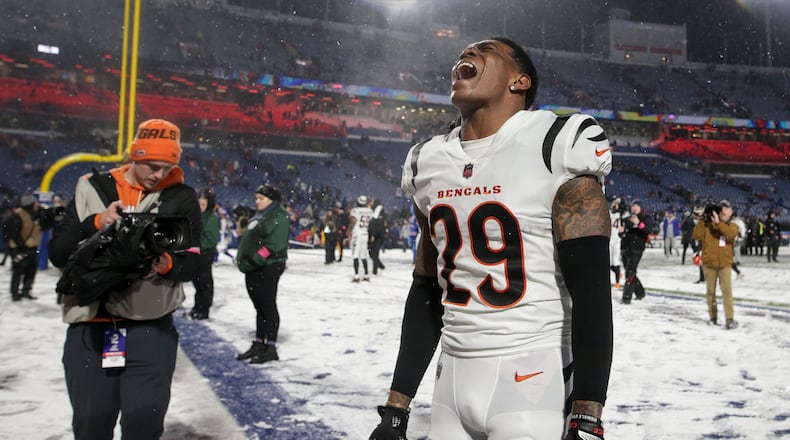Bettors rushed to the sportsbooks, pouring money on the Bengals, they reported.
Caesars Sportsbook, which opened with Kansas City as 2.5-point favorites, took early money on the Bengals, including an influential bettor on Cincinnati that contributed to the line dropping, according to ESPN.
Soon the betting line dropped to the Chiefs favored by 1.5 points and by this morning, the Bengals were 1.5-point favorites, a 4.5-point swing from Sunday.
Some movement in the line can be traced to the ankle injury of Chiefs quarterback Patrick Mahomes, who probably will have limited mobility against the Bengals.
Now that Ohio has legalized gambling, many novice gamblers don’t understand how the betting line moves.
Those who set the betting lines hope to attract the same amount of money on both teams. When the bets are one-sided, the betting lines are moved in hopes of enticing gamblers to take the other team.
In a perfect world for the sportsbooks, the same amount is bet on each team. If that happens, and it never does, the sportsbooks make 10%. Let’s say $10 million is bet on the Bengals and $10 million on the Chiefs, the sportsbooks make $1 million regardless of who covers the spread.
Here are the odds to win the Super Bowl, according to Caesars Sportsbook: Chiefs +260, Eagles +270, Bengals +280 and 49ers +300. So for every $1 you wager on the Bengals, you win $2.80 if the team wins the Super Bowl.
For those looking for assistance with wagering terminology:
1. Favorites vs. Underdogs: Oddsmakers in Las Vegas, the betting capital of the world, spend hours on computers trying to figure out which team should be favored, which team should be the underdog and by how many points.
The favorite is the team expected to win the game. That team will get a minus sign next to its odds. The underdog will get a plus sign.
2. Spreads: The spread is the number of points a team is expected to win the game.
Point spreads can change throughout the week based on factors like key injuries and inclement weather.
3. Moneylines: Unlike betting the point spread of a game, if you bet the moneyline, you just have to pick the winning team. While that sounds easy, you also have to bet larger sums of money. For instance, if you’re betting a -200 favorite, you need to risk $200 to win $100, or $20 to win $10, $2 to win $1.
But if you bet an underdog team that is +170, you win $170 for every $100 you wager, $17 for every $10 and $1.70 for every $1.
Basically, the larger the point spread, the smaller the payout if you bet the favorite, and the opposite if you bet the underdog.
4. Over/Under: If you’re not sure who will win the game, another possible bet is over/under, where the object is trying to predict the total points scored. Oddsmakers set a total number of points scored in a game by both teams.
For instance, the over/under in the Bengals game Sunday is 47 points. So if you think the offenses will score a lot of points, you may want to bet the over. But bet the under if you think it will be a low scoring game dominated by the defenses.
Let’s say the Bengals win 30-23. That’s a total of 53 points so those who bet the over would win.
5. Here’s how sports books make money: You have to wager $11 for every $10 you want to win. That extra 10% is called the “juice.”
So one person bets $110 on the Bengals to cover the spread and another person bets $110 on the Chiefs. Regardless of who covers the spread, the sportsbook makes $10.
About the Author

